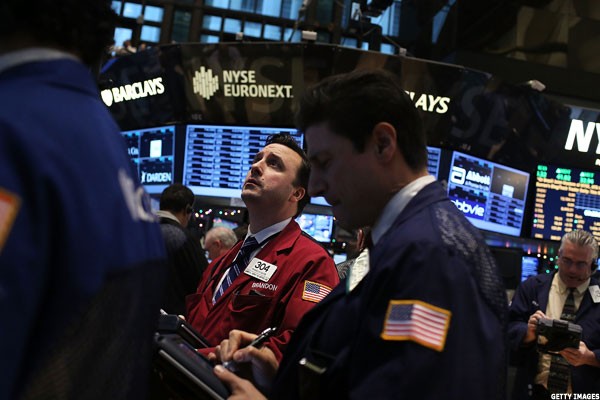ETF Alternatives for Last Week s Hot Stocks
Post on: 7 Апрель, 2015 No Comment

Recent Posts:
The Fiscal Cliffs Threat to Muni Bonds
ETF Alternatives for Last Weeks Hot Stocks
Much like the Mitt Romney and the Republicans, the markets had a bad time last week. First, Romney went out on Nov. 6 and delivered results that were in many respects worse than John McCains efforts in 2008. Then the markets, fearing the fiscal cliff at year-end and continuing woes in Europe, lost big-time.
The S&P 500 declined 2.4% for the week of Nov. 5-9 and now is up less than 10% for the year with seven weeks left to go. Still, InvestorPlace contributors were busy coming up with ways to benefit despite the slump in the markets. Here are my ETF alternatives for the stocks that got recommended last week.
James Brumley was high on Starbucks (NASDAQ:SBUX ) Nov. 5, citing the coffee chains impressive streak of revenue and earnings growth over the last decade. It seems to be making all the right moves,including a big expansion into Asia and the introduction of its own single-serve latte and coffee maker that aims to bring down Green Mountain Coffee Roasters (NASDAQ:GMCR ). Most important, Starbucks was one of the few companies in Q3 to guide upward instead of downward, meaning good things lie ahead.
Your best bet to capture its success while providing yourself with an interesting ETF alternative is to buy the iShares MSCI USA ESG Select Social Index Fund (NYSE:KLD ), which seeks to replicate the performance of large-cap stocks that also possess positive environmental, social and governance (ESG) characteristics. The index itself is 250 strong, but KLD whittles it down to 148 names based on a ratings criteria for ESG companies. Starbucks is the third-largest holding at 2.93%.
There is one caveat KLDs performance since inception in 2005 has been mediocre in comparison to the S&P 500. Personally, I believe it will do better in the future than it has in the past as these ESG issues become more important to investors. But you do run a risk of the fund continuing to underperform.
Lower gas prices seemed to have settled in for the immediate future, and consumers are definitely happy about that. What does it mean for companies like Chevron (NYSE:CVX )?
Tom Taulli wrote on Election Day that he believes Asia is where Chevron will see much of its future growth, and its deepwater drilling is what will provide much of the supply. For the first nine months of the year, Chevron had operating cash flow of $26 billion and a little less than $6 billion in free cash flow for share repurchases and dividends. My only request is that it improve cash flow so that it isnt buying back shares with debt.
In terms of ETF alternatives, Id recommend the Energy Select Sector SPDR Fund (NYSE:XLE ), which has Exxon Mobil (NYSE:XOM ) and Chevron as the top two holdings at a combined 34.7%. With an expense ratio of 0.18%, its cheap and long-term provides an excellent proxy on energy.
Charles Sizemore was very enthusiastic about whiskey producers on Nov. 7, pointing out the benefits of owning some of the industrys top companies. He seems to prefer Diageo (NYSE:DEO ) because of its size and 2.3% dividend yield.
Sizemores timing couldnt have been better. Two days later, Diageo announced it was buying 53.4% of United Spirits, Indias largest liquor company, for $2.1 billion. Emerging markets is the growth battleground in the liquor industry, and this deal solidifies Diageos position in the Asian marketplace. The company is a solid long-term bet.
The ETF alternative here is the RevenueShares Navellier Overall A-100 Fund (NYSE:RWV ), which aims to identify the 100 highest quality stocks in the U.S. equity market applying a quantitative approach combined with a revenue-based weighting rather than market capitalization. Diageo is the sixth-largest holding of the fund at 4.53%. Although its not cheap at 0.60%, RWVs performance over the past few years is better than the S&P 500s.
Nov. 8 saw Profitable Investing editor Richard Band recommend that investors buy Intel (NYSE:INTC ) below $24 a share. Band sees it achieving a 20% total return in 2013, thanks in large part to its generous 4.2% yield. Like Chevron, Intel has excellent operating cash flow. Even better, its free cash flow for the first nine months of the year was 34% of operating flow compared to 23% for Chevron.
Spending 17% of its revenue on research and development, Intel has a very stable place within the semiconductor industry. While Im tempted to recommend a fund that has a higher weighting, Ill go with the Schwab U.S. Dividend Equity ETF (NYSE:SCHD ), which has a 30-day SEC yield of 3.09% and an expense ratio of just 0.07%. Intel is the fourth-largest holding, at 4%, of the 100-stock portfolio.
InvestorPlace editorial assistant Alyssa Oursler finished out the week suggesting that the hiccup Whole Foods (NYSE:WFM ) experienced after announcing earnings on Nov. 8 might provide momentum investors with an entry point. Whole Foods isnt a cheap stock for sure, but it is growing at a reasonable rate, and thats something growth investors always like to see. I also like Whole Foods. Its expansion potential in Canada is very exciting.
An interesting fund alternative is one that Im not very familiar with, and thats the Huntington EcoLogical Strategy Fund (NYSE:HECO ), which has Whole Foods at a weighting of 5.09%, its third-largest holding. An actively managed ETF, HECO has been in business since June. It chooses to invest in companies focused on ecology. Because its actively managed, its fee is high at 0.95%.
Seeking high-quality growth companies expected to increase earnings over the next three to five years, fund manager Brian Salerno has the experience one should look for in a successful fund. This looks interesting.
As of this writing, Will Ashworth did not own a position in any of the stocks named here.














